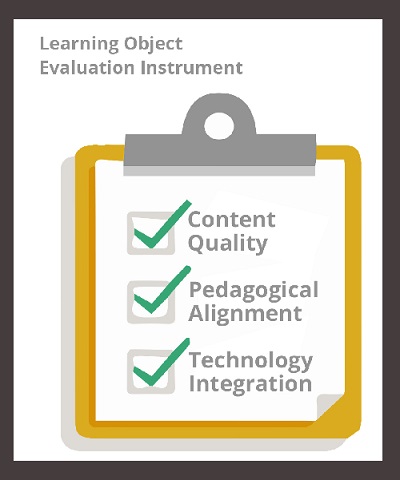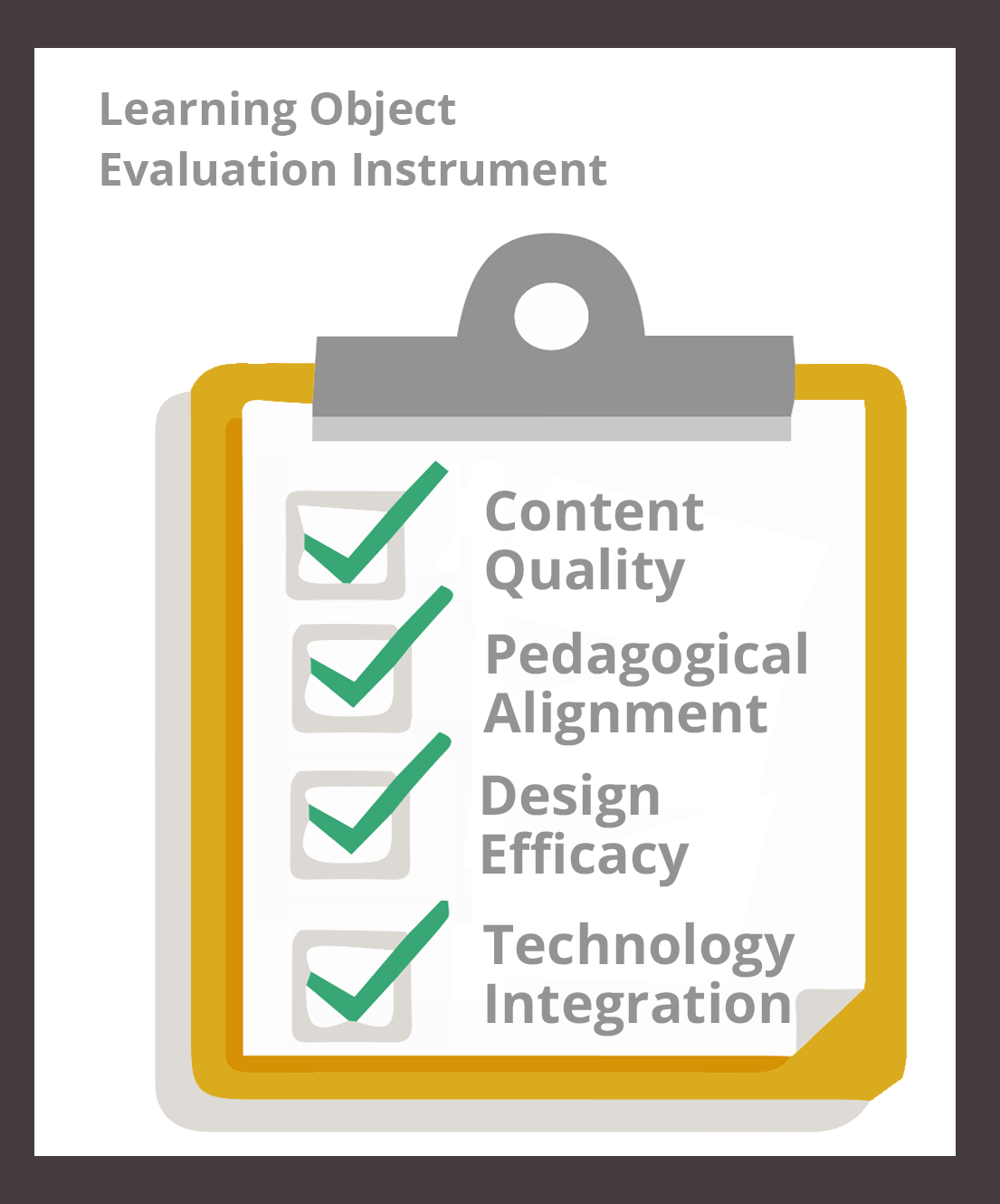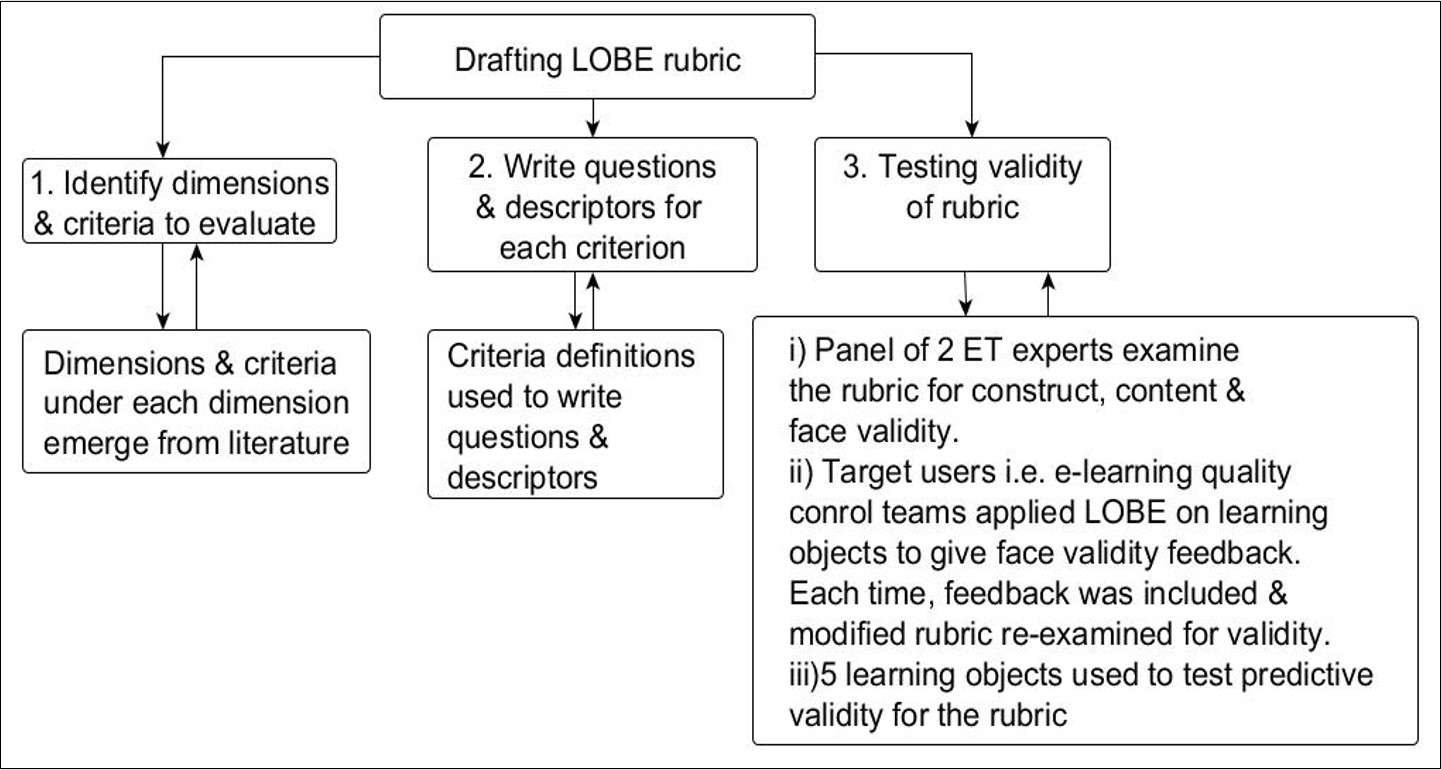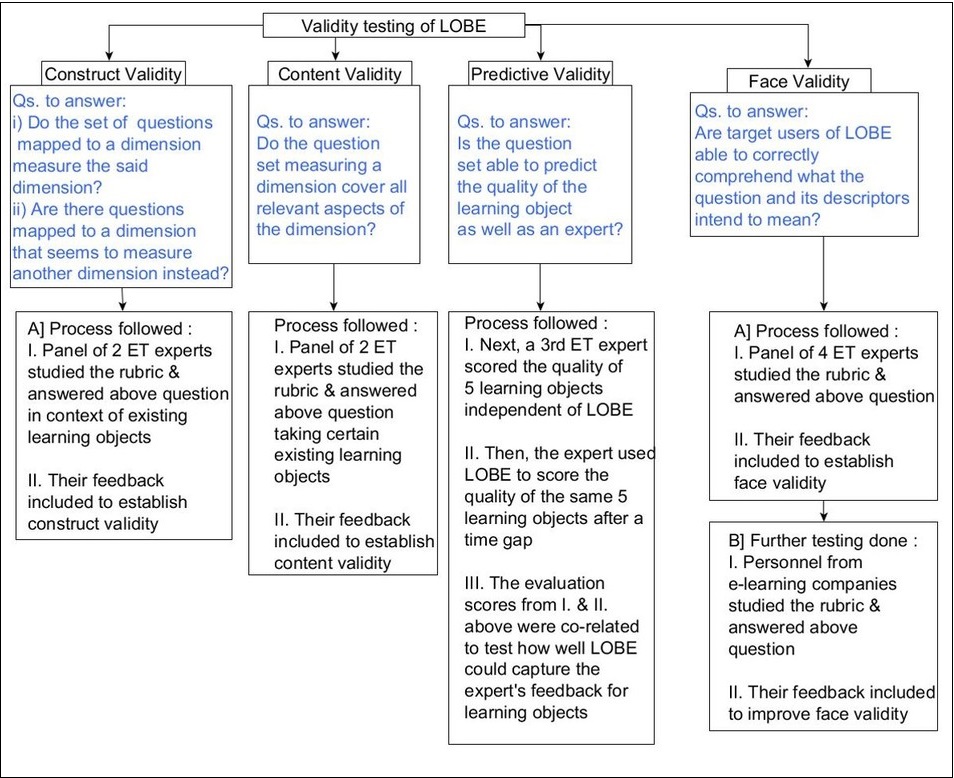 Figure 1: Structure of LOBE
...
Figure 1: Structure of LOBE
...
The four quality dimensions measured by LOBE are:
| Quality dimensions measured by LOBE | Description of dimension |
|---|---|
| 1.Content Quality (C) | Measures accuracy of content and assessment questions, how well these components connect to real-world scenarios, how updated the content is with recent advances in the topic knowledge etc. |
| 2.Pedagogical Alignment (P) | Measures the extent to which the learning object is learner-centred and promotes higher-order thinking among the learners. |
| 3.Design efficacy (D) | Measures the extent to which the learning object incorporates Multimedia design principles as well as Interaction design principles to promote meaningful learning among the learners. |
| 4.Technology Integration (T) | Measures how well the learning object adheres to graphic design principles and how well the different components of the learning object have been integrated to create a meaningful teaching-learning experience. |
Each question can be scored along a 4-point scale : Score 0 (Missing); Score 1 (Inadequate); Score 2 (Almost) and Score 3 (Target) Score
| Score | Means the quality aspect addressed by the question |
|---|---|
| Score 0 (Missing) | Is completely missing in the learning object |
| Score 1 (Inadequate) | Has been inadequately implemented in the learning object, needs lot of improvement |
| Score 2 (Almost) | Has almost been adequately implemented but there is still scope of improvement |
| Score 3 (Target) | Has been implemented in the learning object in the ideal way i.e. as recommended by educational technology research |
LOBE is scoped to learning objects which have dynamic visualizations (simulations/animations/videos) as their core component. Also,
If you are an e-learning company, you can use LOBE when you want to :
If you are an educator (HOD/Principal of a school), you can use LOBE when you want to :
Click on the list below to download the version of LOBE you want to use.
| Name | Image | About Version | Download | Download Count |
|---|---|---|---|---|
| LOBE_LITE |  |
|
User Manual | |
| Rubric | ||||
| LOBE_PREMIUM |  |
|
User Manual | |
| Rubric |
LOBE can be used in a stepwise manner to score the quality dimensions of a learning object and obtain the quality assessment for a set of learning objects created. The guiding steps are given below.
Apart from these, LOBE can be used to assess the quality of a specific learning object along the 4 dimensions
LOBE was iteratively developed in three stages. Refer to Figure 2 below.
 Figure 2: Development process of LOBE
Figure 2: Development process of LOBE
LOBE has been pilot tested for different forms of validity. This implies LOBE has been tested with educational technology experts, who used existing learning objects, to test if LOBE accurately measures what it intends to measure (validity) i.e. content quality, quality of pedagogical alignment & technology integration in learning objects.
 Figure 3: Validity testing for LOBE
Figure 3: Validity testing for LOBE